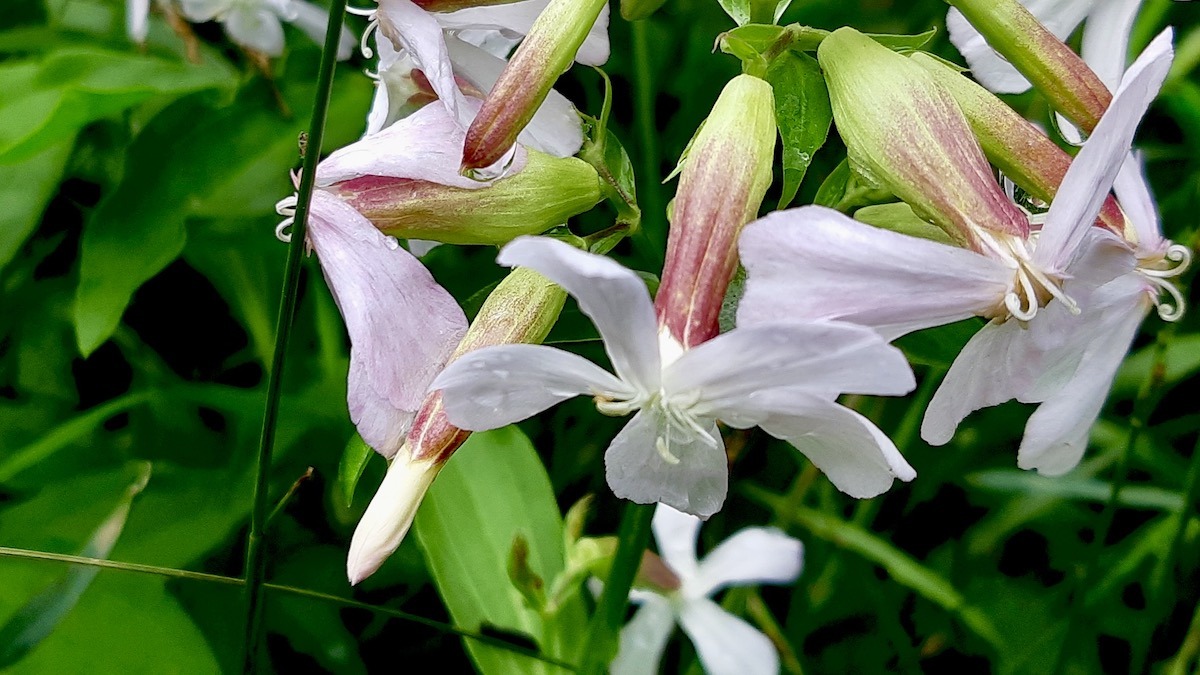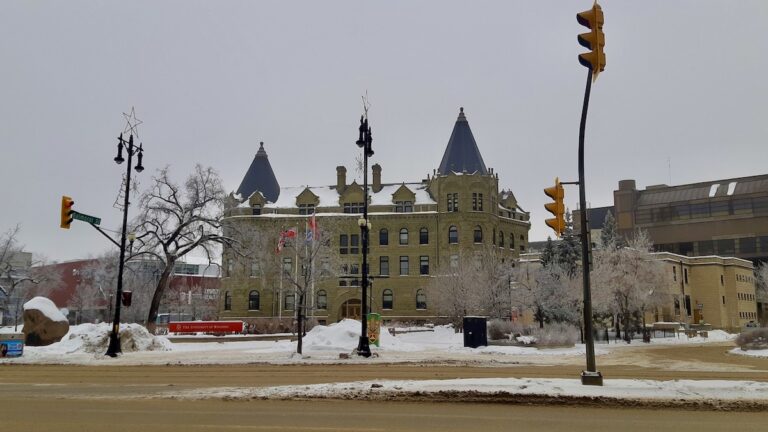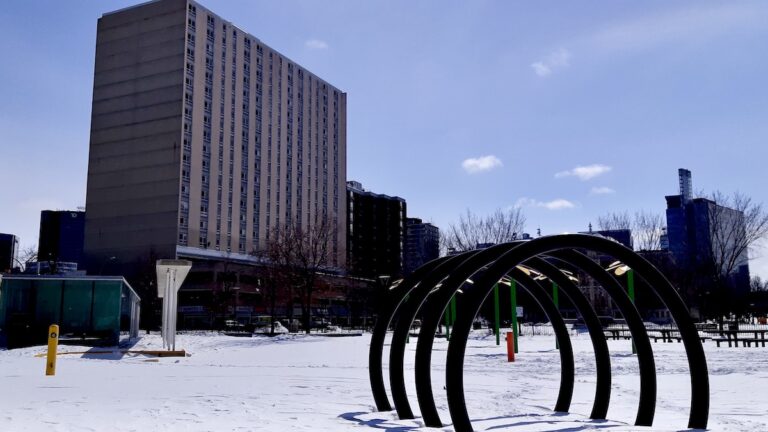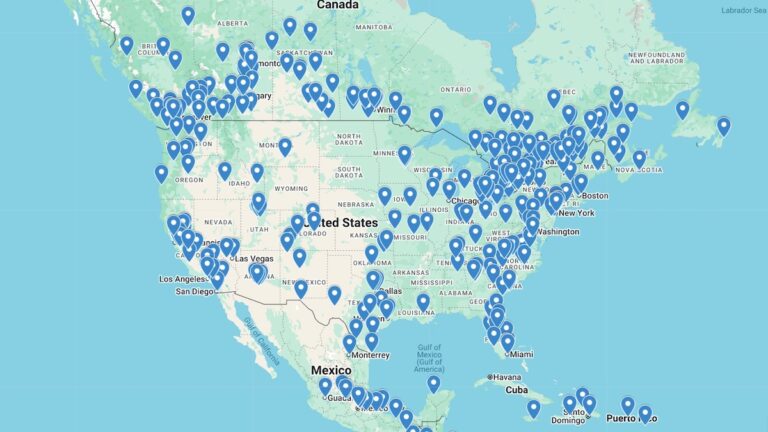
A detailed view of Bouncing Bet's five-petaled bloom and its characteristic tubular calyx. These features are key for accurate identification in the field.
Learning from Saponaria officinalis
As participants in the Living Land Lab with the Arts Incubator, the focus is often on discovering the stories held within the plants around us. Sometimes, these stories belong to plants that are already quite familiar, yet reveal new layers when truly observed. One such plant, blooming around us, is Bouncing Bet (Saponaria officinalis). It is also known as Soapwort, or even Wild Sweet William. Its presence, quite common in this Northwestern Ontario setting, offers a wonderful starting point for artistic observation and understanding.
Close observation of its flowers reveals clusters of five-petaled blooms, often a lovely pale pink or white, sometimes with a faint blush. They tend to gather densely at the top of the stems. A closer look at the base of each flower shows the distinctive, elongated, tube-like calyx – a feature that helps distinguish it from other similar-looking wildflowers. The petals themselves often have a slightly crinkled or wavy texture, giving each bloom a delicate, almost ruffled appearance. For artists, these details—the way the light plays on the petals, the clustered form, the subtle hues—offer endless possibilities for photography, sketching, or even poetic interpretation.

Artistic Inspiration from a Common Wildflower
Beyond its visual appeal, Bouncing Bet holds a fascinating secret hinted at by its common name, “Soapwort.” For centuries, parts of this plant, particularly the roots and leaves, have been used to create a gentle, natural cleansing agent. They contain compounds called saponins, which create a lather when agitated in water, much like soap. It serves as a reminder that even common plants can hold surprising, traditional “uses” or functions that are deeply interwoven with human history.
In Northwestern Ontario, Bouncing Bet thrives in environments much like our Living Land Lab. It is frequently found flourishing along roadsides, in old fields, disturbed areas, and around the edges of gardens or woodlands. As a very resilient plant, it is capable of forming dense patches. This adaptability means it is a constant, reliable presence in many local landscapes, easily finding a foothold and spreading. Its robust nature and ability to grow in varying soil conditions make it a true indicator of the region’s dynamic ecosystem, a plant that can offer significant insights into the history and current state of the land itself.





